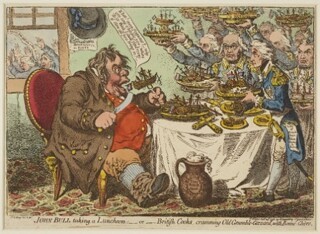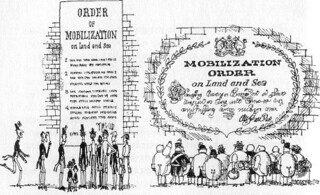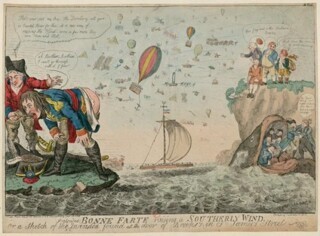Fattypuffs and Thinifers
Inigo Thomas
In André Maurois's 1930 children's novel Patapoufs et Filifers (translated by Rosemary Benét as Fattypuffs and Thinifers in 1940), Terry and Edmund are the children of Mr and MrsDouble. Terry, like his father, is thin; Edmund, like his mother, isn't. One day, the inseparable brothers descend into an underworld where you're either a Fattypuff or a Thinifer. The brothers aretherefore divided, one packed off to Thiniville, the other to Fattyborough.
Terry is amazed among the Thinifers:
There wasn't a single one who was fat, or even moderately plump. All of them – men, women, and children were dreadfully, dreadfully thin. One could see the bones through their cheeks. There wasno flesh on their hands, and their clothes hung losely about them... 'Where am I?' Terry wondered.
Jean Bruller's illustrations depict a Thinifer population so thin that their faces make sense only in profile.
On board Edmund's boat are three-dimensional people:
The sailors... strolled casually about, some with their hands in their pockets, and others eating bits of bread and chocolate, or perhaps a piece of sausage or the wing of a chicken. Up on thebridge was the captain. He was seated in an armchair with a table beside him laden with cakes and things to eat. Everybody – captain, sailors and passengers – looked happy and good-humoured.
Edmund is a given a history of Fattypuffs, but his indoctrination into the foundation myths of Fattyborough is interrupted by hot chocolate. Terry learns about the history of the Thinifers. Theboys are witnesses to a falling out between the Thinifers and the Fattypuffs, which leads to war, followed by reconciliation, and the recognition that Fattypuffs and Thinifers are better all roundif they mingle with one another.
Maurois would go on to write about a real war in Why France Fell (1941), but his fictional divide according to girth wasn't so new. In Bonaparte and the British: Prints and Propaganda in the Age of Napoleon, a cartoon showat the British Museum, Bonaparte is often 'Bony' or 'Boney', while John Bull is forever a Fattypuff. Even when the British aren't depicted as John-Bull fat they're still at it, eating and drinking,drinking and eating, always maintaining their own heavy but even keel. In Gillray's John Bull taking a Luncheon an enormous Bull feasts on French battleships served to him by thecommanders who had defeated Napoleon in the Mediterranean. Bonaparte by contrast is not only typically thin, but often ill. In a cartoon by Isaac Cruikshank he stands on the Pas de Calais, vomitingat one end, farting at the other: the caption is 'Bonne Farte Raising a Southerly Wind'.
It's not only John Bull who is fat; so is Britannia. In The First Kiss this Ten Years, the cartoon made by Gillray to mark the halt in the Anglo-French wars after the Treaty of Amiens(1802), a thin Napoleon stoops to kiss a spherical Britannia. 'Madame,' he says, 'permit to me pay my profound esteem to your engaging person, and to seal on your divine lips my everlastingattachment.' 'Monsieur,' she replies, 'you are truly a well-bred gentleman, and though you make me blush, yet you kiss so delicately that I cannot refuse you, though I was sure you would deceive meagain.' In an anonymous print of 1803, Napoleon is depicted as man who has tried to swallow the whole world, only the globe has got stuck in his mouth.
With Napoleon defeated in 1815, a French cartoonist depicts an Englishman arriving and then leaving France. in the first he hops from a ship straight into a kitchen; in the second, his stomach hasto be supported by a wheelbarrow so he can board the ship and return home. Victory was fat, but loss was always thin.



